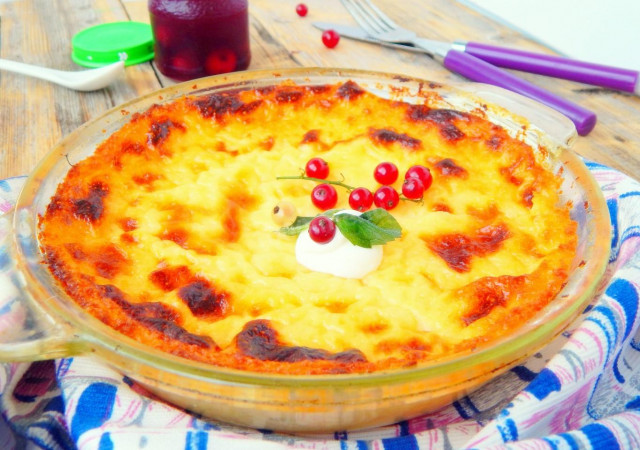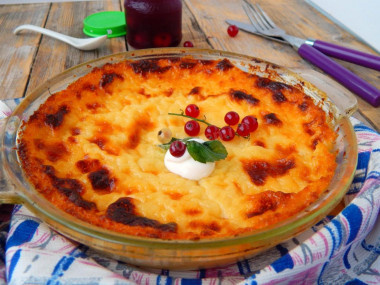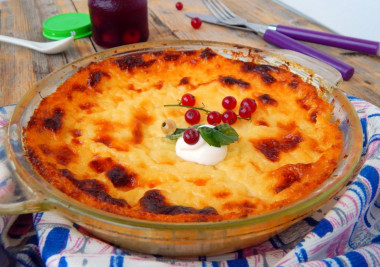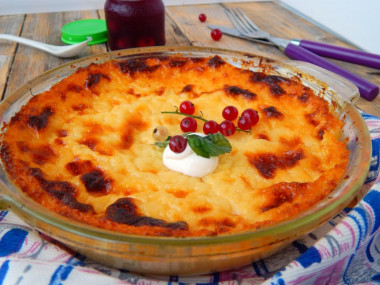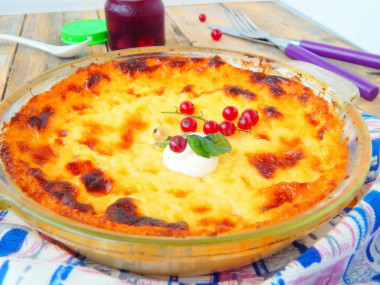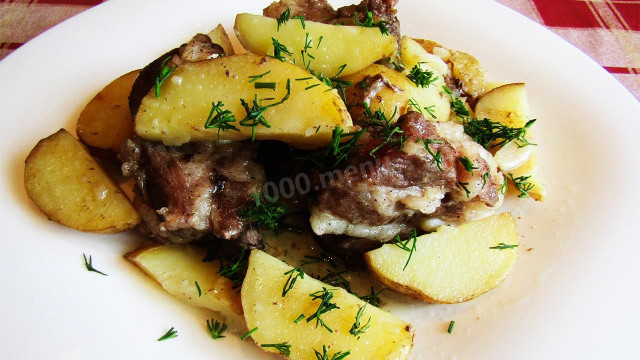Composition / ingredients
Step-by-step cooking
Step 1:

How to make a classic cottage cheese casserole? Remove cottage cheese, sour cream, butter and eggs from the refrigerator in advance. Cottage cheese is best used for homemade casseroles. It is not only more delicious and healthy, it is easier to grind it into a homogeneous mass. If you have low-fat cottage cheese, it can be improved by adding a couple of spoonfuls of sour cream, kefir or milk. Rub the lumpy cottage cheese through a fine sieve or scroll through a meat grinder. You should get an airy homogeneous curd
Step 2:
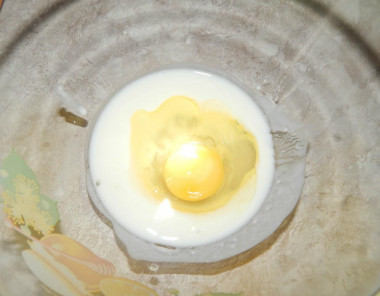
Rub the cottage cheese with sugar, which can be replaced with a sweetener that is not afraid of heat treatment. Add salt and a pinch of vanilla. Mix again or grind with a blender. Beat the chicken eggs with a mixer or whisk with sour cream so that the eggs completely disperse. Sour cream is also better to take fatter, the casserole will turn out more juicy and tasty.
Step 3:
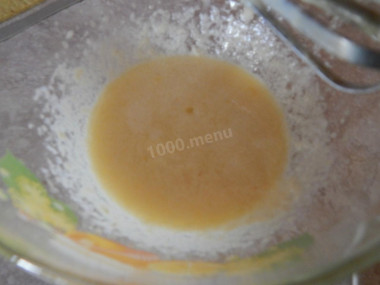
Add softened butter to the bowl with cottage cheese, pour in the egg mixture. Stir the mass. The butter should be softened, not melted, otherwise the consistency of the curd dough will change.
Step 4:
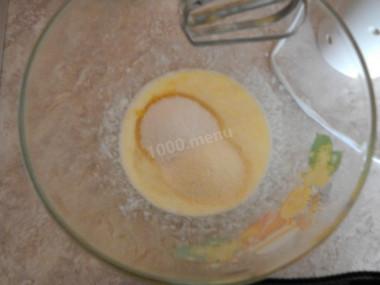
Pour semolina into a bowl with cottage cheese mass. Stir until smooth and leave it for 20 minutes so that the semolina swells. If the cottage cheese you use is excessively moist, increase the amount of semolina so that the dough is not liquid.
Step 5:

Meanwhile, preheat the oven to 180 degrees. In order for it to have time to heat up to the desired temperature, turn it on 10-20 minutes before cooking. Grease the heat-resistant mold with a piece of butter. Sprinkle with semolina so that it covers the bottom of the mold and its sides. Thanks to the sprinkling of semolina, it will be easier to get the casserole after baking.
Step 6:
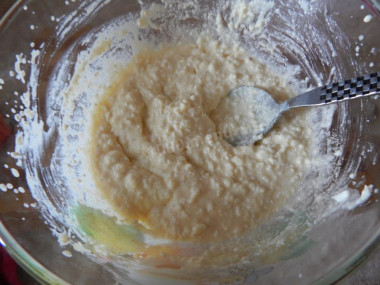
Mix the curd mass that has slightly increased in volume again and put it into the mold, carefully leveling its surface with a spoon. From above, the casserole can be smeared with sour cream. After baking, it will get an appetizing blush. This can be achieved if the sour cream is rustic.
Step 7:
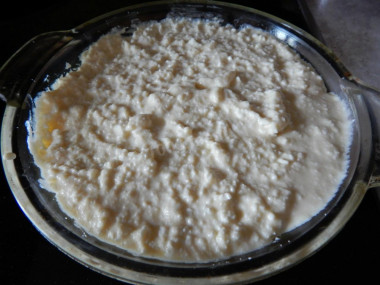
Bake the casserole for about 30 minutes in a preheated 180 degree oven (10-20 minutes before cooking). But you need to focus on the work of your oven. How to check if the casserole is ready? It should be covered with a ruddy crust. Take a wooden skewer and pierce the pastry in several places. If it comes out dry, then it's done.
Step 8:
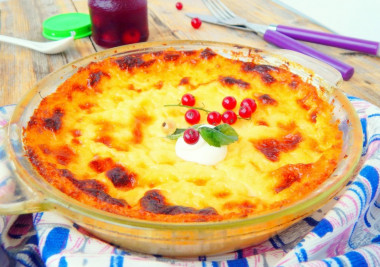
Remove the casserole from the oven. Allow it to cool slightly in the mold so that it does not crumble during removal. Then cut it into pieces and serve it to the table. If desired, cottage cheese casserole can be served with sour cream, jam or jam. Bon appetit!
If desired, dried fruits, chopped walnuts or berries can be added to the casserole, which will make it even tastier and healthier.
Be sure to wash the eggs before use, as even the seemingly clean shell may contain harmful bacteria. It is best to use food detergents and a brush.
Keep in mind that everyone's ovens are different. The temperature and cooking time may differ from those specified in the recipe. To make any baked dish successful, use the useful information in this article !
Any heat-resistant mold is suitable for this recipe. If you use a silicone mold, then you do not need to smear it with butter or margarine. But it is better to lightly lubricate metal, ceramic or glass dishes with vegetable oil so that the baking does not burn.
Caloric content of the products possible in the composition of the dish
- Sour cream of 30% fat content - 340 kcal/100g
- Sour cream with 25% fat content - 284 kcal/100g
- Sour cream with 20% fat content - 210 kcal/100g
- Sour cream of 10% fat content - 115 kcal/100g
- Sour cream - 210 kcal/100g
- Semolina - 340 kcal/100g
- Cottage cheese of 40% fat content - 466 kcal/100g
- Cottage cheese of 20% fat content - 233 kcal/100g
- Cottage cheese of 18% fat content - 226 kcal/100g
- Cottage cheese of 10% fat content - 156 kcal/100g
- Low-fat cottage cheese - 75 kcal/100g
- Cottage cheese with sour cream - 260 kcal/100g
- Fruit cottage cheese - 147 kcal/100g
- Soft dietary cottage cheese - 170 kcal/100g
- Cottage cheese "vitalinia" - 64 kcal/100g
- Cottage cheese "morning" ( "danone") without sugar - 91 kcal/100g
- Cottage cheese - 156 kcal/100g
- Granulated sugar - 398 kcal/100g
- Sugar - 398 kcal/100g
- Butter 82% - 734 kcal/100g
- Amateur unsalted butter - 709 kcal/100g
- Unsalted peasant butter - 661 kcal/100g
- Peasant salted butter - 652 kcal/100g
- Melted butter - 869 kcal/100g
- Salt - 0 kcal/100g
- Vanillin - 288 kcal/100g
- Chicken egg - 80 kcal/100g

